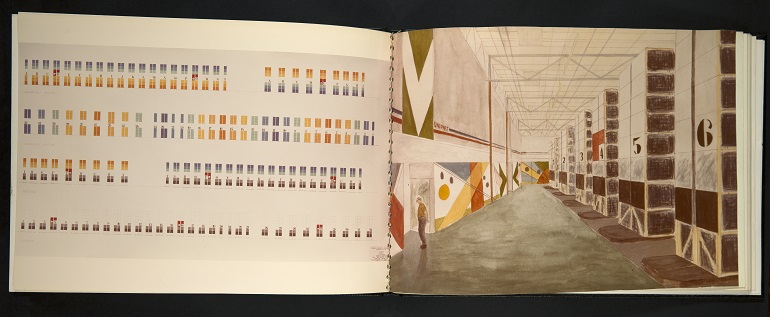DEGW Archive
 DEGW was established in London in 1971 by Frank Duffy, Peter Eley, Luigi Giffone and John Worthington. The original partners were all educated as architects, with Luigi Giffone also being an engineer; Francis Duffy, John Worthington and the late Peter Ely, studied together at the Architectural Association. A key to DEGW’s approach was the combination of consultancy and design work, each challenging the other. Since their takeover by Davis Langdon in summer 2009, and subsequent absorption into AECOM, DEGW closed their design services, concentrating on consultancy alone, as part of Strategy Plus.
DEGW was established in London in 1971 by Frank Duffy, Peter Eley, Luigi Giffone and John Worthington. The original partners were all educated as architects, with Luigi Giffone also being an engineer; Francis Duffy, John Worthington and the late Peter Ely, studied together at the Architectural Association. A key to DEGW’s approach was the combination of consultancy and design work, each challenging the other. Since their takeover by Davis Langdon in summer 2009, and subsequent absorption into AECOM, DEGW closed their design services, concentrating on consultancy alone, as part of Strategy Plus.
DEGW specialised in the design of office environments and were one of the first practices to place an emphasis on how organisations use space and the important role that design has to play in this. They revolutionised space planning for large-scale offices by placing an emphasis on the changing nature of organisations and the need for office accommodation to reflect this, incorporating ideas on mobile and remote working. Initiating the ORBIT (Office Research: Buildings and Information Technology) into the impact on office design of advances in Information Technology. This research had a substantial impact initially on key British office projects such as Broadgate and Stockley Park and then on office design worldwide.
DEGW’s approach to design placed an emphasis on research and they combined concepts from US planning and business, such as ‘time budgeting’, ‘activity mapping’, ‘advocacy planning’ and the explicit use of scientific methods in building design. Their over-arching concern with time and management in architecture produced influential work on the differing life-cycles in buildings from structural core to interior fittings, the involvement of users in the design and management of their space, the emphasis on facilities management as key to the success of large-scale building, the use of pre- and post-occupancy surveys, workshops, strategic briefing and focus group techniques. The firm’s archive is an example of how architectural intelligence can be applied in a broad range of contexts and contains project reports, presentations and drawings, research reports and the firm’s business reports.
Spanning the years 1971 to 1997, this collection contains project reports, presentations and drawings, research reports and the firm’s business reports. The items in the archive were part of the ‘DEGW Knowledge Centre’, an in-house library of the firm, which might have been continuously referred to during the course of the firm’s operations.
The DEGW archive is further complemented by the personal library collection of one of the firm’s founders, Frank Duffy.
Sources:
- Samuel, F. and Green, S. (n.d.). DEGW Archive. [online] University of Reading School of Architecture.
- Schneider, T. and Till, J. (n.d.). DEGW. [online] Spatial Aagency.
More Information
- A full description is available on our online database.
- A handlist for the whole collection can be found here.